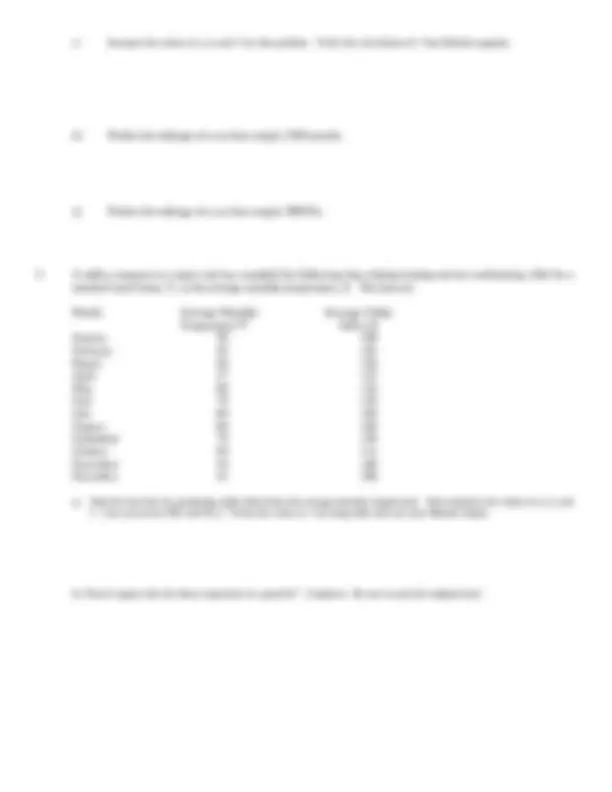



Study with the several resources on Docsity

Earn points by helping other students or get them with a premium plan


Prepare for your exams
Study with the several resources on Docsity

Earn points to download
Earn points by helping other students or get them with a premium plan
Community
Ask the community for help and clear up your study doubts
Discover the best universities in your country according to Docsity users
Free resources
Download our free guides on studying techniques, anxiety management strategies, and thesis advice from Docsity tutors
A regression analysis exercise where students are asked to predict quiz scores based on study time using minitab, and then compare it to predicting commute times based on the number of espresso shots. Instructions on how to use minitab to perform the regression analysis, calculate r2, and interpret the results. It also includes a real-life example of a cwu student's commute data.
Typology: Lab Reports
1 / 3

This page cannot be seen from the preview
Don't miss anything!


xy yy xx
1.808 = 26.8- 24.992. Get into Minitab and enter the data from Worksheet 8. Then do the regression to predict quiz score from study time. Identify where all of these quantities appear and what they are called. From yesterday’s class, you discovered that the
Scheme II with x as a predictor, has SSE=1.808, which is quite a bit smaller than 26.8. How much smaller? 24.992 smaller. We could say that the regression user does better by the amount 24.992. This is called the Sum of Squares due to Regression. Now, using your Minitab results, note that R^2 = 93.8% (or .938 as a decimal). Using only the numbers from the above relation, determine how to calculate R^2. This is exceedingly important. Can you formulate a way of describing how much better a regression user does than a non-regression user?
2 xy yy xx
b) Interpret both the a and b values for this experiment---that is in the context of this particular problem. c) Predict income for a member with 17 years experience.